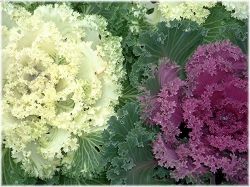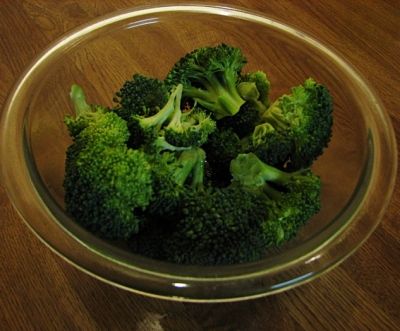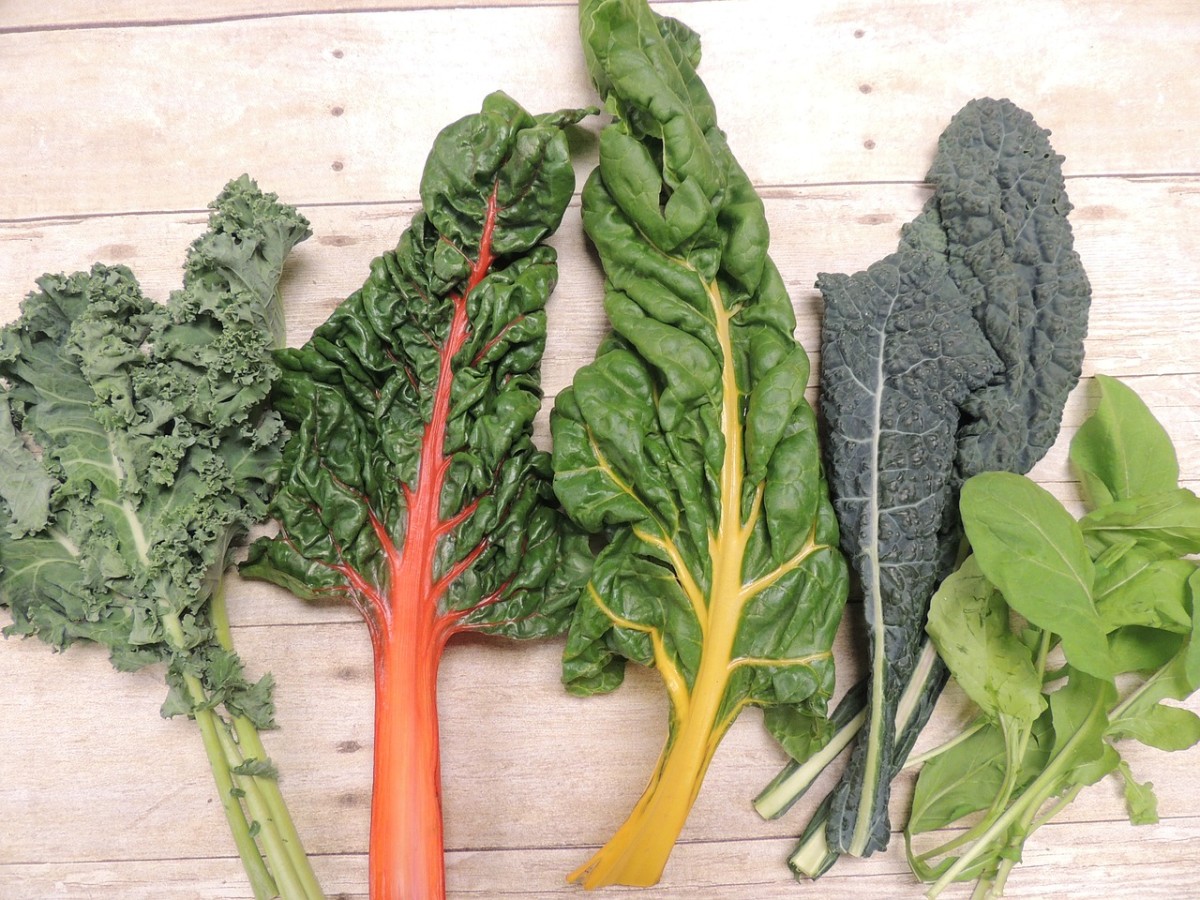Cruciferous Vegetables

Super Veggies
Cruciferous veggies. Yes, veggies -- We're on familiar terms, so I use the nickname. I never disliked them, even as a kid. Squash made me gag, and I wasn't much for green beans either. Just about every other vegetable was fine (if a tad boring). Cruciferous vegetables were less boring than many.
More recently, I found another reason to like cruciferous vegetables. Some studies have associated them with a decreased risk for some cancers -- indeed, some of the ones that plague my family. (My mother had not one but two unrelated breast cancers.) Sure, I was told from the time I was little that fruits and vegetables are healthy, but that's not the same as hearing about specific compounds and they may counter disease processes.
I'll link to a bit of research about the pros and cons of eating more cruciferous vegetable. I am guessing, though, that most people consider them healthy, and would be more interested in tips for incorporating more in the diet... without it seeming like homework. Whether you dislike strong flavored vegetables, or it just seems difficult or inconvenient to cook with them, there are some ways around the problem. (I started out with the intent of providing simple recipes, and ended up delving a bit into why people don't like their veggies...)
If You Don't Like Veggies - Or your kids don't
... You (or they) might be a super taster. I was just reading that some people have especially sensitive taste when it comes to things that are bitter -- they actually experience them more intensely than others. That's not me, but I can relate to the concept. At some point along the way, I realized that I must experience carbonation more intensely than the average person. As a child, I couldn't detect a difference between Coke, ginger ale, or bubbling spring water -- anything carbonated was overpowering and corrosive.
So maybe you've got a super taster who won't eat their super veggies! Once you've identified the problem, what do you do about it? The article below (from WebMD) has some tips. Here are a couple good ones: You might consider countering the bitter veggie taste with another strong taste like sweet, salty, or sour.
Remember that different people will have different tastes when it comes to what to put on a vegetable. (I will add another personal experience here. I have a real sweet tooth, more so than most adults, so one would think I'd like sweet vegetable dishes. No, I have some degree of aversion to any sweet that I don't perceive as supposed to be sweet. Barbecue sauce or sweet and sour sauce? Icky! Chutney? Better not to.)
Also, remember that your taste experience will vary according to how the vegetable is cooked. I actually disagree with the author about vegetables tasting milder raw -- or at least I would bring up more exceptions. I personally think cabbage tastes much milder cooked. I think I experience cauliflower as milder cooked, too. (And now I'm curious if others experience these the same way, or if there's something in the cooked version that I fail to taste.)
- Tips for veggie haters
From WebMD.

Increasing Your Intake of Cruciferous Vegetable: Salads and Slaws
You'll probably find it much easier to eat cruciferous veggies on a daily basis, if you substitute them for lettuce in salads. Cabbage, arugula, chard, and kale work well; so does broccoli if it is shredded and made into broccoli slaw.
Get your materials assembled in advance. Purchase (or make) some salad dressings that you like. I buy two: Goddess dressing and hummus dressing. If you buy prepared foods, you may want to invest in some bagged greens. 'Slaw' mixes are great; you don't have to use mayonnaise if it doesn't suit your tastes or has ingredients in it you're avoiding. Pick something else creamy that you like.
Very Simple Cruciferous Salad Recipe 1:
shredded coleslaw veggies (cabbage with a bit of carrot)
hummus salad dressing
any veggie you like that has a contrasting texture (cherry tomatoes, mushrooms)
Very Simple Cruciferous Salad Recipe 2:
broccoli slaw (shredded broccoli with a bit of carrot)
Goddess salad dressing
any veggie you like that has a contrasting size and texture
Cooking with Cabbage: it's a Wrap
Cabbage is a natural for Middle Eastern inspired cuisine. You can use it raw or lightly cooked. Just fry it for several minutes in a nonstick pan with a dash of sesame oil or other fat. You can add a little garlic and ground pepper.
The simplest wrap adds just a bit of hummus or hummus salad dressing. If you want to invest the time (or money) try baba ganoush -- it's a rather un-veggielike veggie spread made from eggplant. You could also try adding pieces of tempeh or falafel.
A List of Cruciferous Vegetables
Some cruciferous vegetables are true green leafy veggies -- ones we refer to as 'greens'. (Spinach isn't cruciferous, but a number of others are.) Other cruciferous vegetables are mostly stalk. In a few varieties, we eat the root.
- Kale
- Cabbage
- Chard
- Arugula
- Bak choy
- Collard greens
- Broccoli
- Cauliflower
- Brussel sprouts
- Parsnips
- Radishes
How Much Do You Need?
And are there any negatives?
How many servings of cruciferous vegetables do you need? There isn't a consensus. The Linus Pauling Institute has compiled some studies (linked below). They suggest that it's good to get at least five servings a week. There is some difference between the nutrition in cooked and raw vegetables. Studies have found some isolated heath benefits associated with as few as three servings of raw cruciferous vegetables a month. Other studies note that far more is necessary to counter some disease processes. Women who are concerned about breast cancer sometimes take a supplement that isolates some of the compounds in cruciferous vegetables because it simply wouldn't be practical to eat that much broccoli.
A potential downside is that there are compounds in cruciferous vegetables that can have a negative impact on thyroid function. The Linus Pauling Institute reports that very high consumption of these vegetables has been linked to hypothyroid, but that increasing your intake will generally not cause problems unless you're iodine deficient.
I think it depends a lot on a person's own metabolism and genetic makeup; personal and family health history will offer some clues, though they won't tell you everything. I had my thyroid checked a year ago, and it was normal. Interestingly, the doctor had ordered a test not because she was concerned about the possibility of hypothyroidism, but of hyperthyroidism. She had noted a high pulse and a bit of a tremor. I've always been a bit skinny, and I think my metabolism runs on the high side. The bottom line is I try to get one to two servings a day of cruciferous vegetables, and I am not at all concerned about it having a bad thyroid effect.
Foods that impact hormone balance can affect mood. It's an individual thing; people may experience positive or negative effects or notice no effect whatsoever. Women who take supplements that contain compounds from cruciferous vegetales (DIM or IC3) sometimes reflect that it impacts their mood or causes irritability. Others have said it helps. Generally, though, people report an improved sense of well-being when they eat a healthier, veggie-rich diet.
Anything else worth noting? Another issue is that some people have trouble digesting cruciferous vegetables, at least in some forms.
Cruciferous Vegetable Nutrition
- Overview from the Linus Pauling Institute
With links to various resources. - An overview of cruciferous veggie nutrition.
From WH Foods. - Goitrogens
A general, balanced look at the goitrogen issue.

Here are two recipes, which use mostly the same ingredients, but different manners of cooking. The cruciferous vegetables are accompanied by seaweed, which is an important source of iodine, and also lends a different flavor. I use the kind that is bought in the refrigerator section of a whole foods co-op. Even when it seems to be well rinsed, it retains a lot of salt. That's why these recipes don't call for Bragg's or soy sauce.
These are quick and easy recipes. There are various time savers you can employ, like using frozen vegetables. The Ramen recipes assumes you are working with mostly frozen vegetables. (Exceptions would be mushrooms and cabbage, whick cook very quickly.) Even pearl onions can be bought frozen.
Ingredients
- Cruciferous vegetables
- Mushrooms
- Onions
- Seaweed
- Sesame Oil
- Garlic and spices
- Ramen
Instructions
- Have all ingredients prepped (vegetables chopped, seaweed washed).
- If you are using fresh onion, you'll want to cook it until it's almost transluscent before adding other vegetables. Broccoli also needs a bit more tme than some of the others.
- Stir frequently. Toss seaweed in just before adding seasonings.
- Alternative: Ramen noodles Discard seasoning pack. Cook noodles together with vegetables.
More Cruciferous Vegetable Recipes
- Crunchy salad
This salad features a lot of cruciferous veggies. - Cruciferous soup
This hearty soup is a blend of cruciferous and noncruciferous veggies. - Roasted cauliflower with tahini
Here's cauliflower cooked up with tahini, garlic, and other savory seasonings.
Credits
- Cruciferous Vegetables
On Morguefile.








